This is the Introduction to the fourth section of my first collection, Placing Movies: The Practice of Film Criticism (University of California Press, 1993).– J.R.
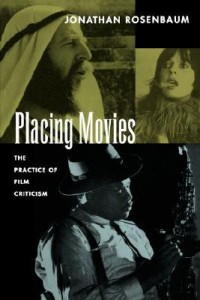
This is the most rebellious and contentious section of the book, and because of this, some readers will regard it as the least practical or viable. Before you make up your own mind about this, however, I’d like to ask you to examine precisely what you mean by “practical” and “viable.” Do you mean most likely to change the world, or do you mean most likely to affect the majority? If in fact you believe that the likeliest way to change the world is invariably to affect the majority, then it might be beneficial to look at that premise a little more closely and see if it always holds up.
Speaking from my own experience, the times when I’ve reached the greatest number of readers at once — writing features in the pages of magazines like Elle and Omni — are the times when my point of view has had the least amount of effect. How do I know this? I can’t exactly prove it, but a writer’s sense of his or her impact comes from feedback, and I’ve had virtually no feedback at all on the pieces I’ve written for mass-market magazines. Read more
Written in 2013 for a 2019 Taschen publication. — J.R.
Mr. Hulot’s Holiday
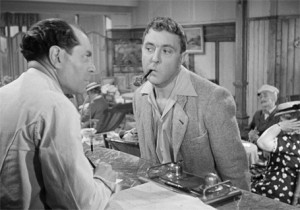
1. Tati as traditionalist, Tati as experimenter
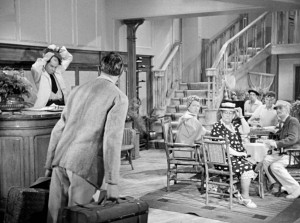
There’s a clear and consistent see-sawing pattern that can be traced over the course of Tati’s half-dozen features: a relatively conventional comedy with a relatively well-defined storyline is followed by something more radical, original, and experimental, and less bound or defined by traditional storytelling.
This isn’t only the way that PlayTime follows Mon Oncle and that Parade follows Trafic. The way that Les Vacances de Monsieur Hulot follows Jour de fête is no less striking and significant. Even after we acknowledge that, as an original artist with an artisan’s sensibility, Tati invariably experimented in all his creative work — and that Jour de fête would have seemed more experimental in 1949 if he had been able to process and release it in color, as he had intended — one can still find a striking difference between his more narrative-bound and his less narrative-bound works.
At the same time, however, there’s a certain thematic continuity that’s followed from one feature to the next even when the style and form undergo important changes. On the most basic level, Tati’s first two films deal with vacation time and the second two deal with architecture. Read more
In celebration of Cutter’s Way, which Twilight Time brought out on Blu-Ray, and the wonderful Ivan Passer (1933-2020). This interview appeared in The Soho News, July 15, 1981, and was recently reprinted in my 2018 book Cinematic Encounters: Interviews and Dialogues. — J.R.
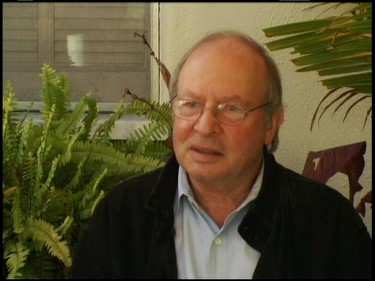
A very likeable guy, this Ivan Passer. When he tells a story, he knows just how to pace it out dramatically, in filmic terms — a trait he shares with Samuel Fuller, who virtually stages movie sequences in the course odf describing them. A very different kind of director who also has a special feeling for outcasts, Passer pursues a subtle way of his own. A Czech in exile, he suavely took over my attention with the quiet intensity of a small, spry Ancient Mariner.
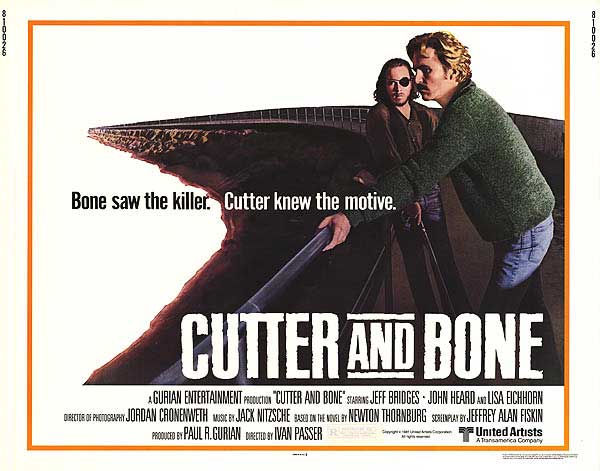
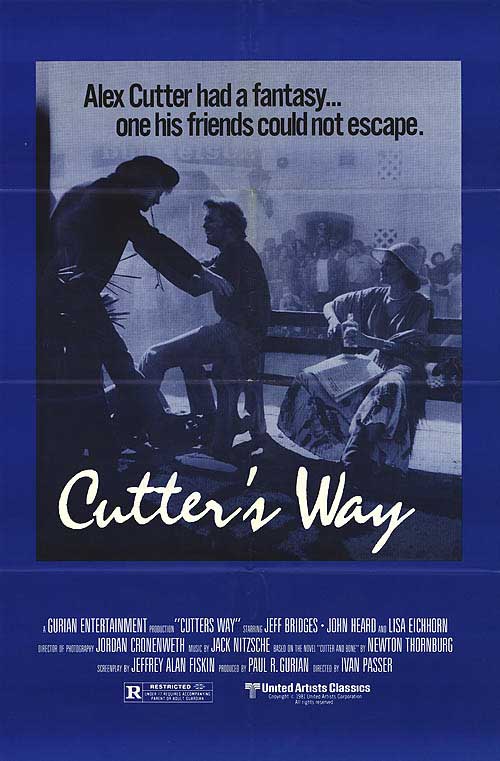
I had been knocked out by his passionate Cutter’s Way. Under the title Cutter and Bone, the movie had already been aptly praised in these pages by Seth Cagin and Veronica Geng — right around the same time that it was getting abruptly snatched from release — and it was a pleasure to find it living up to its notices.
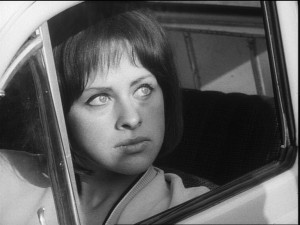


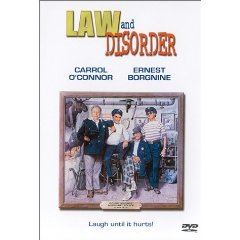
It’s hard to be precise about the doleful yet personable wit projected by Passer — a matter of style, feeling and attitude more than taste or opinion –but it helps if you’ve seen one of his movies. Read more
Written for The Unquiet American: Transgressive Comedies from the U.S., a catalogue/collection put together to accompany a film series at the Austrian Filmmuseum and the Viennale in Autumn 2009. — J.R.
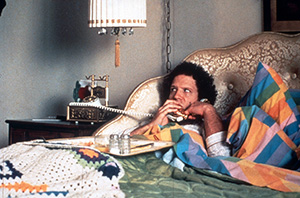
The brassy and obnoxious show-biz type that
Albert Brooks plays in his first and funniest feature
(1979) –- so close to Brooks’s own public persona that
he’s called Albert Brooks –- professes to be impervious
to all the self-consciousness that engulfs him.
Even when he’s shooting an extended documentary
about the life of a “typical” family in Phoenix,
Arizona in the style of the infamous 1973 cinéma-
vérité TV series An American Family, he claims
that anything the family does in front of the camera is
“right,” without ever admitting that the acute self-consciousness
created by his film and camera crew
ultimately has more to do with movies than with real
life. Charles Grodin brilliantly plays the animal
doctor at the head of this family, and Brooks is so
skillful at juggling all the mannerisms of pseudo-documentary
and all the specious claims of pop psychology
that his periodic and compulsive regressions to
old-time show business -– whether it’s the big-time
pop vocal in the opening sequence or the conflagration
inspired by Gone with the Wind at the
end –- manage to be both welcome and ludicrous. Read more
From Film Comment (January-February 1982); reprinted in my book Film: The Front Line 1983. My thanks to Jon Jost himself for furnishing me with the frame grabs from Last Chants for a Slow Dance and Stagefright. — J.R.

1. “This is a movie, a way to speak. It is bound, like all systems of communication, with conventions. Some of these are arbitrarily imposed, some are imposed by economic or political pressures, some are imposed by the medium itself. Some of these conventions are necessary: They are the commonality through which we are able to speak with one another in this way. But some of these conventions are unnecessary, and not only that, they are damaging to us, they are self-destructive. Yet we are in a bad place to see this. We are in a theater.” Jon Jost, addressing the camera and spectator in Speaking Directly (1974).
2. Despite five substantial and in many ways remarkable features under his belt since 1974, and nineteen shorts since 1963, Jon Jost at 38 is still a long way from becoming even an arcane household name in this country. Not that he makes it easy on anyone. His originality, technical virtuosity, and political sophistication have all tended to work against him by showing the rest of us up — thereby banishing him from most of the restricted genre and market classifications designed to protect us from his scorn, under avant-garde and mainstream umbrellas alike. Read more
From the Chicago Reader (April 5, 1996). — J.R.

The Neon Bible
Directed and written by Terence Davies
With Gena Rowlands, Diana Scarwid, Jacob Tierney, Denis Leary, Leo Burmester, Frances Conroy, and Peter McRobbie.
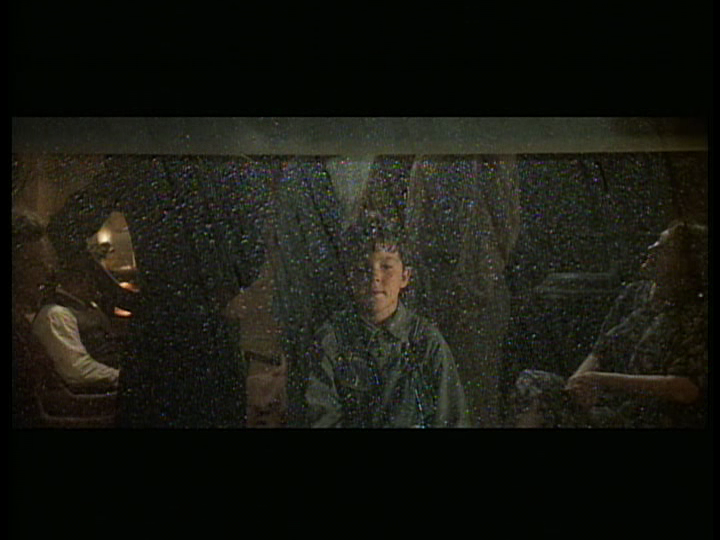
Two paradoxical facts about Terence Davies’s first film adaptation:
(1) It follows fairly closely The Neon Bible, a novel written by John Kennedy Toole for a literary contest in the mid-50s, when he was 16 — a decade before he finished work on his second novel, A Confederacy of Dunces, and about 15 years before he, still unpublished, committed suicide (A Confederacy of Dunces was published ten years later, The Neon Bible ten years after that). I don’t care much for The Neon Bible, a hackneyed mood piece set in a rural backwater of the deep south, but I think the movie, which seems 100 percent Davies, is wonderful.
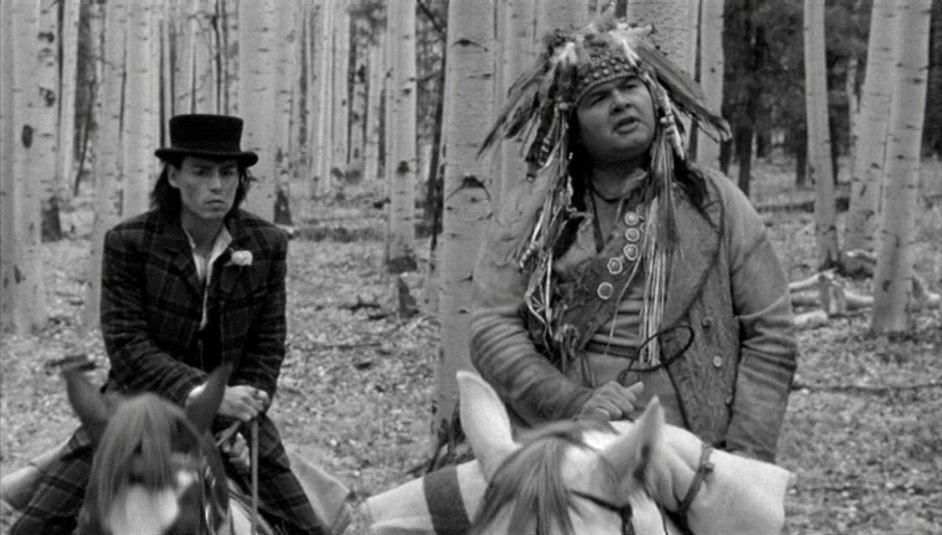
(2) Of all the English-speaking films shown at Cannes last May, the two that got the most boorish and least comprehending reception by the English-speaking press were The Neon Bible and Jim Jarmusch’s Dead Man, though for nearly opposite reasons. Jarmusch, who’s long been criticized for coasting along in Down by Law, Mystery Train, and Night on Earth on the same kind of hip humor he virtually invented for Stranger Than Paradise, finally broke free and did something bold, original, political, dark, scary, outspoken, witty, and often beautiful — a black-and-white western that should be opening here sometime next month. Read more
From the Chicago Reader (October 21, 1994). This is also reprinted in my collection Movies as Politics. — J.R.
*** ED WOOD
(A must-see)
Directed by Tim Burton
Written by Scott Alexander and Larry Karaszewski
With Johnny Depp, Martin Landau, Sarah Jessica Parker, Patricia Arquette, Jeffrey Jones, Bill Murray, Lisa Marie, George “The Animal” Steele, and Vincent D’Onofrio.
*** PULP FICTION
(A must-see)
Directed and written by Quentin Tarantino
With John Travolta, Samuel L. Jackson, Uma Thurman, Bruce Willis, Ving Rhames, Maria de Medeiros, Tim Roth, Amanda Plummer, Harvey Keitel, Eric Stoltz, Rosanna Arquette, Christopher Walken, and Tarantino.
[The media] ask those who know nothing to represent the ignorance of the public and, in so doing, to legitimize it.
— Serge Daney, Sight and Sound
If you want a happy ending, that depends, of course, on where you stop your story. — Orson Welles
In Vamps & Tramps, Camille Paglia’s latest collection of sound bites and press clips, one finds an extended account of her long-term obsession with Susan Sontag, including the following nugget: “She is literally being passed by a younger rival, and she’s not handling it, I’m afraid, very gracefully. . . . I am the Sontag of the 90s, there’s no doubt of it.” Read more
Commissioned by Found Footage for its 4th issue (February 2018). — J.R.
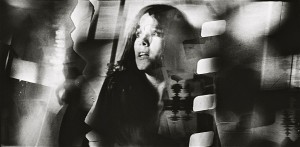
We’re living through a confusing transitional period whose transitions are chiefly matters of financial speculation lying beyond our control. Theorizing our helpless condition — which often means attempting to rationalize it, or to adapt to it by other means — we’re obliged to use an out-of-date language. This antiquated language needs to be upgraded with a new vocabulary if we want to make useful sense of what’s happening — something that we haven’t yet figured out how to do. Just as “politically correct” language can sometimes be described as the language of defeat – struggling to make an adequate representation of a reality over which one has lost control – theoretical cinema suggests at times a farewell gesture towards a medium that has fled.
The fumblings to be found below are an attempt to clarify not so much five experimental films in 35-millimeter and CinemaScope by Peter Tscherkassky — L’Arrivée (1997-1999, 2:09 min.), Outer Space (1999, 9:58 min.), Get Ready (1999, 1:06 min.), Dream Work (2001,11 min.), and Instructions for a Light and Sound Machine (2005, 17 min.), all of which I find powerful, provocative, haunting, and ultimately confounding — as the confusing language used to describe them. Read more
These are the original letters published in French translation in Trafic no. 24, Winter 1997 and subsequently published in English in a 2003 book edited by Adrian Martin and myself, Movie Mutations: The Changing Face of World Cinephilia (London: British Film Institute). These letters have by now also appeared in Croatian, Dutch, Farsi, French, German, and Spanish. — J.R.
From Jonathan Rosenbaum (Chicago):
7 April, 1997
Dear Adrian,
Almost a year has passed since I wrote in Trafic* about “the taste of a particular generation of cinephiles — an international and mainly unconscious cabal (or, more precisely, confluence) of critics, teachers, and programmers, all of whom were born around 1960, have a particular passion for research (bibliographic as well as cinematic), and (here is what may be most distinctive about them) a fascination with the physicality of actors tied to a special interest in the films of John Cassavetes and Philippe Garrel (as well as Jacques Rivette and Maurice Pialat).” I named four members of this generation — Nicole Brenez (France), Alexander Horwath (Austria), Kent Jones (U.S.), and you (Australia). Each of you, I should add, I met independently of the other three, originally through correspondence (apart from Kent), although Kent and Alex already knew each other. Read more
The following was written for CITIZEN PETER, a very handsomely produced and multilingual 476-page book celebrating the late Peter von Bagh’s 70th birthday, in late August 2013, coedited by Antti Alanen and Olaf Möller. — J.R.

Preface
Peter von Bagh is the man who convinced me to purchase my first multiregional VCR in the early 1980s. So he has a lot to answer for — including, just for starters, my DVD column in Cinema Scope.
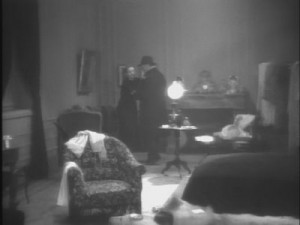
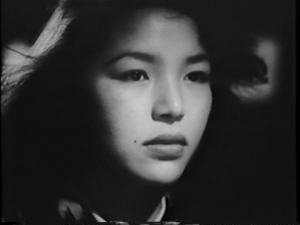
We’ve met at various times in Paris, London, New York, Southern California, Chicago, Helsinki, Sodankylä, and Bologna — and probably in other places as well, although these are the ones I currently remember. The first times were in Paris in the early 1970s, when he looked me up, and it must have been either in San Diego in 1977 or 1978 or in Santa Barbara between 1983 and 1987 that he convinced me to buy a multiregional VCR. Most likely it was the latter, where I was mainly bored out of my wits apart from my pastime of taping movies from cable TV, and Peter maintained that if we started swapping films through the mail, a multiregional VCR would allow me to play some of the treasures he could send me. Read more
From Take One (January 1979). — J.R.
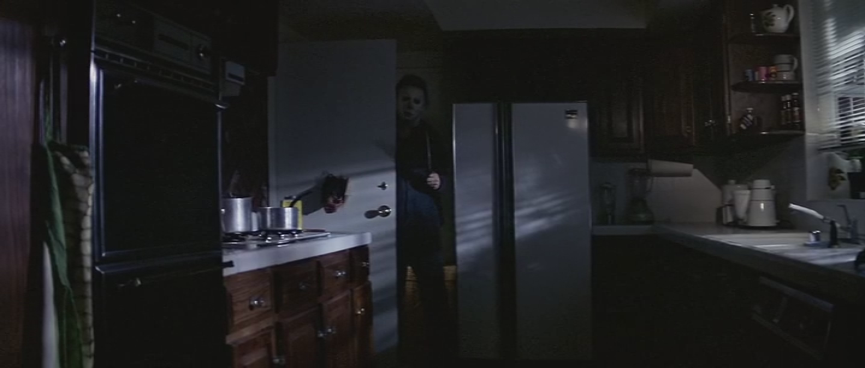
In order to do justice to the mesmerizing effectiveness of Halloween, a couple of mini-backgrounds need to be sketched: that of writer-director John Carpenter, and that of the Mainstream Simulated Snuff Movie — a popular puritanical genre that I’ll call thw MSSM for short.
(1) On the basis of his first two low-budget features, it was already apparent that the aptly-named Carpenter was one of the sharpest Hollywood craftsmen to have come along in ages — a nimble jack-of-all-trades who composed his own music, doubled as producer (Dark Star) and editor (Assault on Precinct 13), and served up his genre materials with an unmistakably personal verve. Both films deserve the status of sleepers; yet oddly enough, most North American critics appear to have slept through them, or else stayed away. Somehow, the word never got out, apart from grapevine bulletins along a few film-freak circuits.
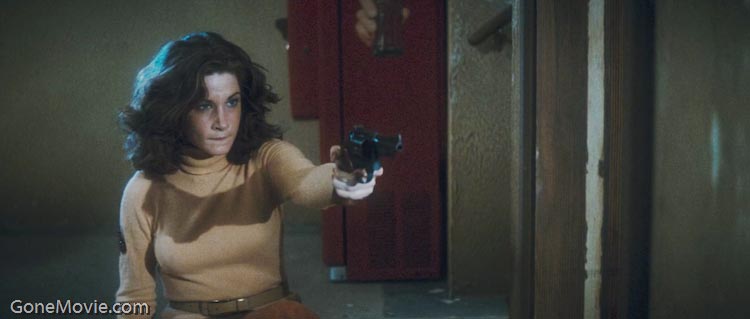
Dark Star proved that Carpenter could be quirky and funny; Assault showed that he could be quirky, funnu, and suspenseful all at once. Halloween drops the comedy, substitutes horror, and keeps you glued to your seat with ruthless efficiency from the first frame to the last. Read more
From the Chicago Reader (June 7, 1996). — J.R.


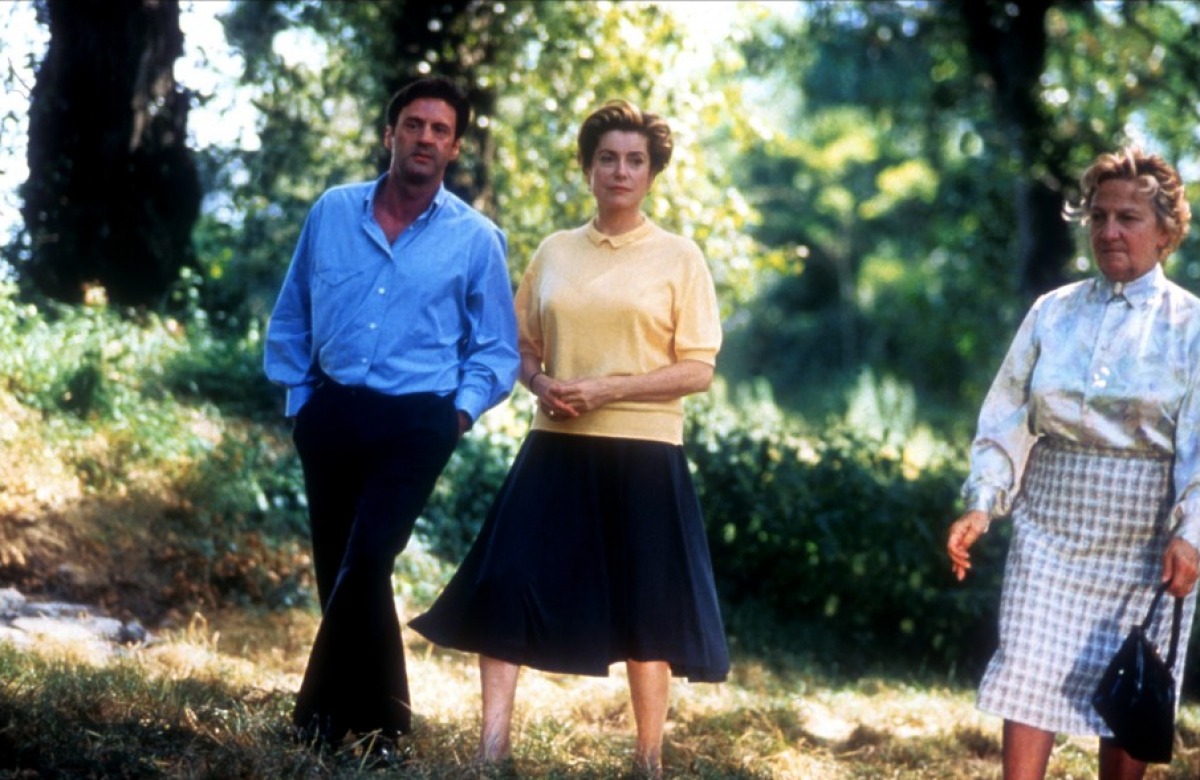
Mission: Impossible
Rating * Has redeeming facet
Directed by Brian De Palma
Written by David Koepp, Steven Zaillian, and Robert Towne
With Tom Cruise, Jon Voight, Henry Czerny, Emmanuelle Beart, Jean Reno, Ving Rhames, Kristin Scott-Thomas, and Vanessa Redgrave.
The Phantom
Rating * Has redeeming facet
Directed by Simon Wincer
Written by Jeffrey Boam
With Billy Zane, Kristy Swanson, Treat Williams, Catherine Zeta Jones, James Remar, and Cary-Hiroyuki Tagawa.
My Favorite Season
Rating *** A must see
Directed by Andre Téchiné
Written by Téchiné and Pascal Bonitzer
With Catherine Deneuve, Daniel Auteuil, Marthe Villalonga, Jean-Pierre Bouvier, Chiara Mastroianni, Carmen Chaplin, Anthony Prada, and Michèle Moretti.
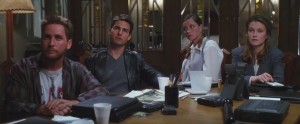

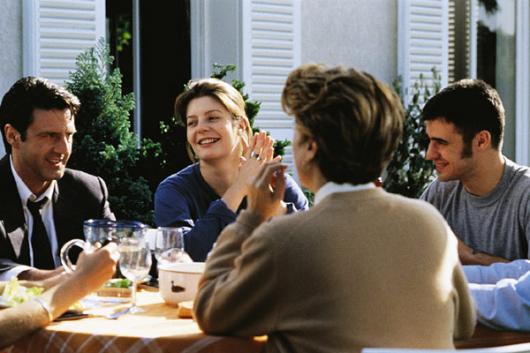
I think that one never grows up emotionally. We grow up physically, intellectually, socially, and even morally but never emotionally. Recognition of this fact can be either terrifying or deeply moving. Everyone handles it in their own way. — Andre Téchiné



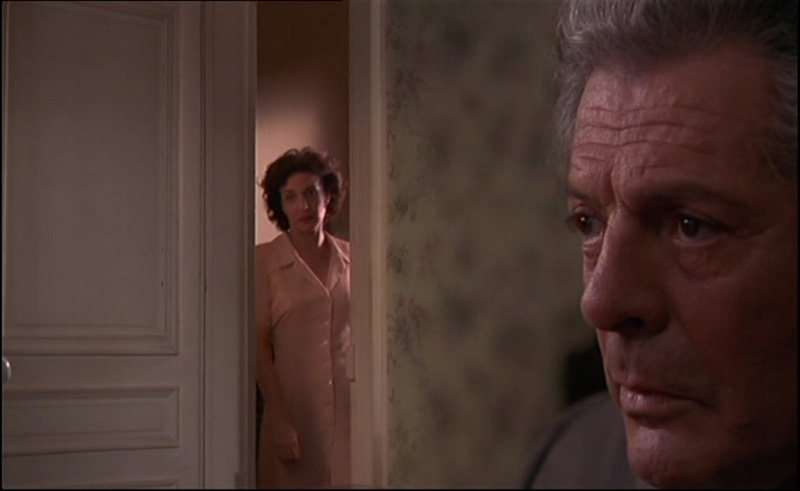

The principal pleasure of the Cannes festival for me was a two-week vacation from the “fun” of American movies. Maybe this fun — which points to our inability to grow up emotionally — would seem less oppressive if it didn’t also inform the American experience of news, politics, fast food, sports, economics, education, religion, and leisure in general; this kind of fun is less an escape than an enforced activity, a veritable civic duty. Read more
From the Chicago Reader (July 31, 1992). — J.R.
![]()
DEATH BECOMES HER
No stars (Worthless)
Directed by Robert Zemeckis
Written by Martin Donovan and David Koepp
With Goldie Hawn, Meryl Streep, Bruce Willis, Isabella Rossellini, Ian Ogilvy, Adam Storke, and Sydney Pollack.
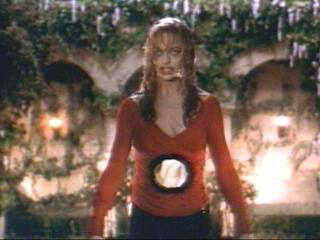
“The copper is fair game for pies, likewise any fat man. Fat faces and pies seem to have a peculiar affinity. If the victim is fat enough the movie public will tolerate any kind of rough stuff.
“On the other hand, movie fans do not like to see pretty girls smeared up with pastry. Shetland ponies and pretty girls are immune.
“It is an axiom of screen comedy that a Shetland pony must never be put in an undignified position. People don’t like it. You can take any kind of liberties with a donkey. They even like to see the noble lion rough-housed, but not a pony. You might as well show Santa Claus being mistreated.
“The immunity of pretty girls doesn’t go quite as far as the immunity of the Shetland pony, however. You can put a pretty girl in a comedy shower bath. You can have her fall into mud puddles. They will laugh at that. But the spectacle of a girl dripping with pie is displeasing. Read more
I wrote this book review for The Village Voice shortly after I moved to London from Paris in 1974 (which helps to explain how I could cite the English paperback of Myra Breckinridge), so I was more than likely a little miffed when the Voice noted at the end of the piece, “Jonathan Rosenbaum is a film critic presently living in Paris.” Although I think this review suffers a bit from the Voice‘s overheated smart-alecky manner during this period, which I was only too willing to adopt (and which makes some of my gripes potentially open to the charge of the pot calling the kettle black), I was reminded of both this review and Myra Breckinridge/Myron while recently reading Vidal’s somewhat similar 1978 novel Kalki, which has a similarly formidable heroine-narrator with a comparably ambiguous relation to gender. — J.R. [4/3/09]
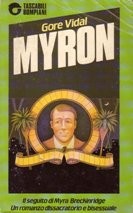
More Vidal
By Jonathan Rosenbaum
_____________________________________________________
Myron
Gore Vidal
Random House, $6.95
______________________________________________________

Myra Breckenridge was a stunt: a clever gay trick pulled on a straight audience — or, if one prefers, a bisexual prank pulled on a unisexual audience — with kibitzers and spectators welcome on either side of the ironies, different jokes for different folks. Read more
This piece by Ehsan for Fandor’s Keyframe originally appeared on the day before my 70th birthday (February 26, 2013).– J.R.
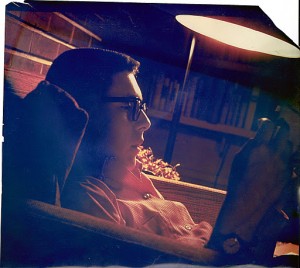
Jonathan Rosenbaum at 15, imagination in the process of being liberated.
Jonathan Rosenbaum, at the cusp of seventy, talks about a life of jazz and cinema.
By Ehsan Khoshbakht February 26, 2013
The needs-no-introduction film critic Jonathan Rosenbaum turns seventy this month, but that does not mean that he has grown out of touch. His latest book, Goodbye Cinema, Hello Cinephilia (University Of Chicago Press, 2010), displays Rosenbaum’s engagement with digital-era realities, and manages something few if any critics of his generation are capable of in the current environment: optimism. Self-catalogued on his own website, the critic’s life of writing, from his late teens to the two-thousand-and-teens, coheres, and the collection of work is unmatched by any living film writer for its breadth and rigor. A closer look at his contribution to film literature (with featured articles in the weightiest of magazines and translations of his baker’s dozen books into languages as diverse as Chinese and Farsi) finds Rosenbaum generally bringing a sense of urgency to his subjects, no matter the decade.
My rather personal ties with the Chicago-based critic comes from our mutual love of jazz, which, aside from its ecstatic pleasures (that sometimes surpasses cinema’s), can assist writers in the ways they approach any other art form. Read more




































